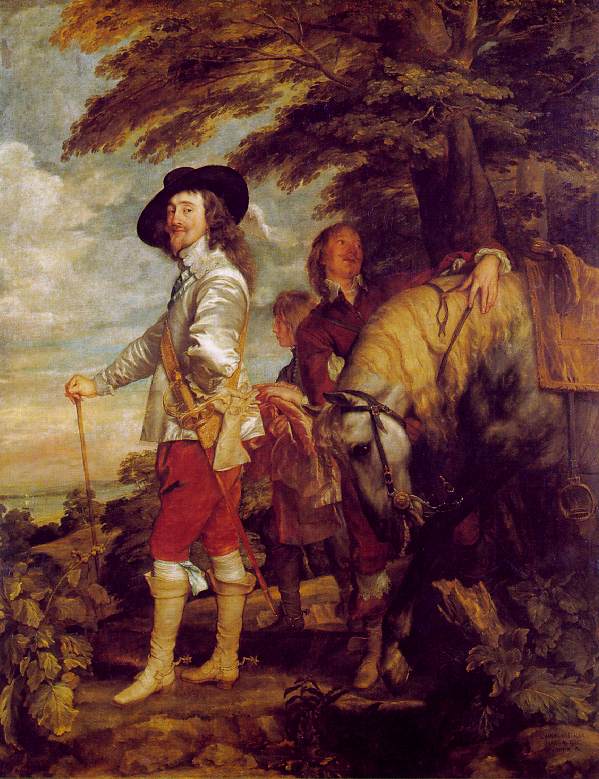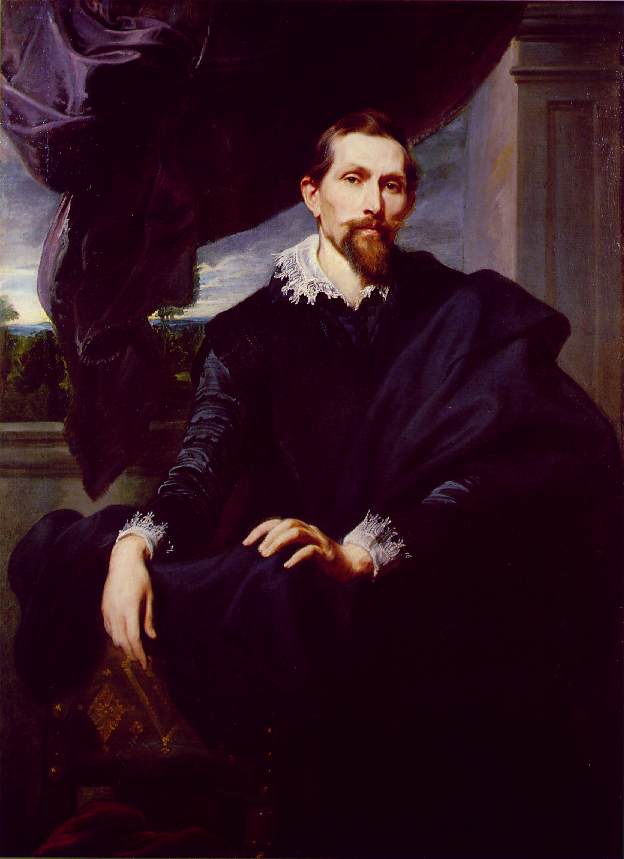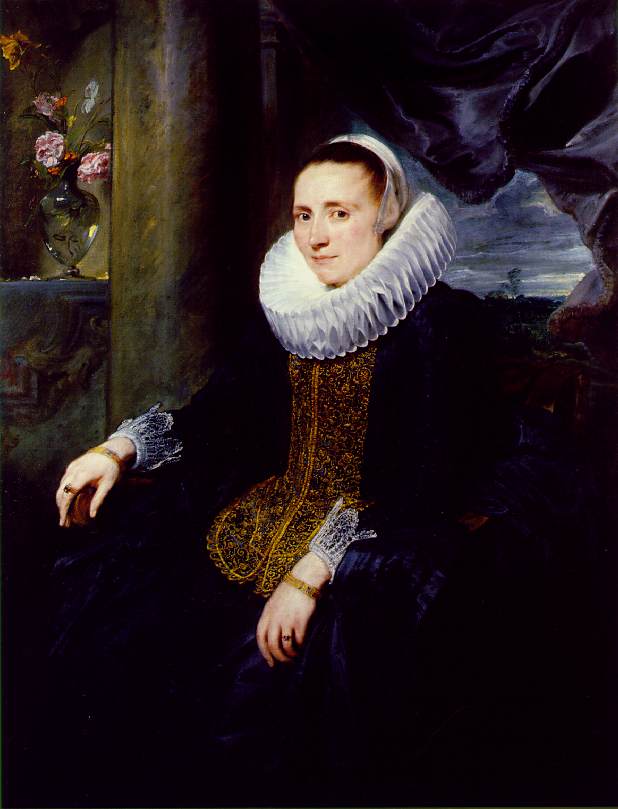
Self Portrait. Oil on canvas; Pinakothek, Munich
Ο μεγαλύτερος μετά τον Peter Paul Rubens Φλαμανδός ζωγράφος του 17ου αιώνα, ο Anthony Van Dyck, γεννήθηκε στις 22 Μαρτίου 1599 στην Antwerp, και πέθανε στις 9 Δεκεμβρίου 1641 στο Λονδίνο. In 1609 he began his apprenticeship with Hendrick van Balen in his native Antwerp and he was exceptionally precocious. Although he did not become a master in the painters' guild until 1618, there is evidence that he was working independently for some years before this, even though this was forbidden by guild regulations. Probably soon after graduating he entered Rubens's workshop. Strictly speaking he should not be called Rubens's pupil, as he was an accomplished painter when he went to work for him. Nevertheless the two years he spent with Rubens were decisive and Rubens's influence upon his painting is unmistakable, although ven Dyck's style was always less energetic.

Charles I of England. c. 1635; Oil on canvas, 266 x 207 cm; Musée du Louvre, Paris
In 1620 van Dyck went to London, where he spent a few months in the service of James I (1566-1625), then in 1621 to Italy, where he travelled a great deal, and toned down the Flemish robustness of his early pictures to create the refined and elegant style which remained characteristic of his work for the rest of his life. His great series of
Baroque portraits of the Genoese aristocracy established the `immortal' type of nobleman, with proud mien and slender figure. The years 1628-32 were spent mainly at Antwerp.
Frans Snyders. c. 1620; Oil on canvas, 142.5 x 105.4 cm; Frick Collection, New York
From 1632 until his death he was in England -- except for visits to the Continent -- as painter to Charles I, from whom he received a knighthood. During these years he was occupied almost entirely with portraits. Perhaps the strongest evidence of his power as a portraitist is the fact that today we see Charles I and his court through van Dyck's eyes. It is customary to accuse van Dyck of invariably flattering his sitters, but not all his patrons would have agreed. When the Countess of Sussex saw the portrait (now lost) van Dyck painted of her she felt "
very ill-favourede" and "
quite out of love with myself, the face is so bige and so fate that it pleases me not at all. It lokes lyke on of the windes puffinge -- but truly I think tis lyke the originale."
Margareta Snyders. c. 1620; Oil on canvas, 130.7 x 99.3 cm; Frick Collection, New York
Van Dyck's influence on English portraiture has been profound and lasting:
Gainsborough, in particular, revered him, but he was an inspiration to many others until the early 20th century, when society portraiture ceased to be a major form of artistic expression. He also painted religious and mythological subjects, however, and a surprising facet of his activity is revealed by his landscapes in water-color (British Museum, London). His
Iconography (1645) is a series of etchings or engravings of his famous contemporaries. Van Dyck etched some of the plates himself, and many more were engraved after his drawings and oil sketches.




2 comments:
Μμμ... αφιέρωμα στο συνωνόματο. Εύστοχα, λοιπόν, παρατηρείς ότι οι Αντώνιοι της Ιστορίας ήταν όντως μεγάλοι...
Χαιρετώ ελπίζοντας να γίνω και εγώ μια μέρα μία ανάρτηση σ' αυτό το ιστολόγιο.
:-)
Είναι αυτονόητο ότι σου το εύχομαι ολόψυχα... Κι αυτό να μην είναι μακριά. Άλλωστε, ξέρεις, όταν κάτι το θέλεις πολύ, στο τέλος γίνεται.
Γεια σου φίλε μου Antoine!
Post a Comment